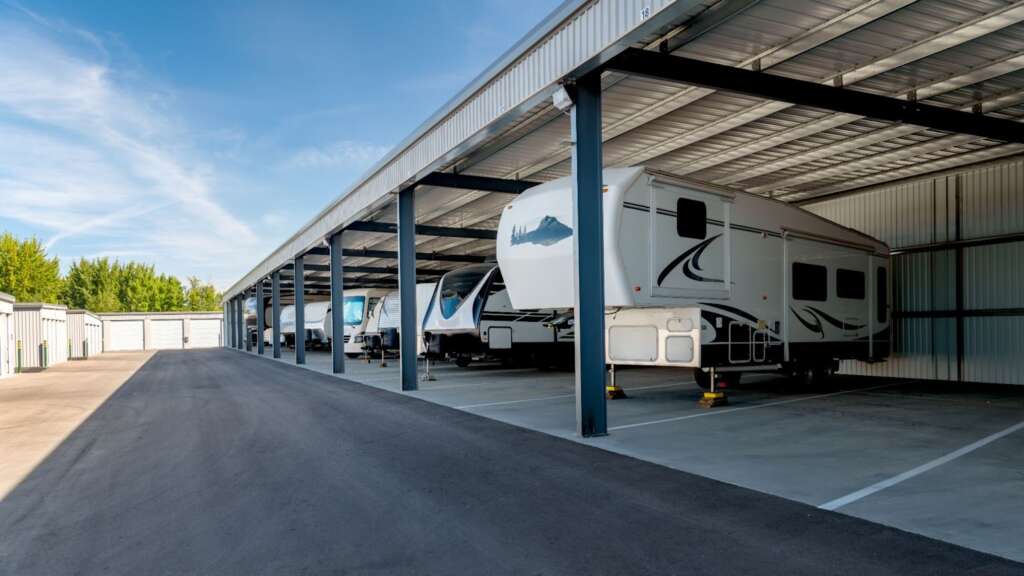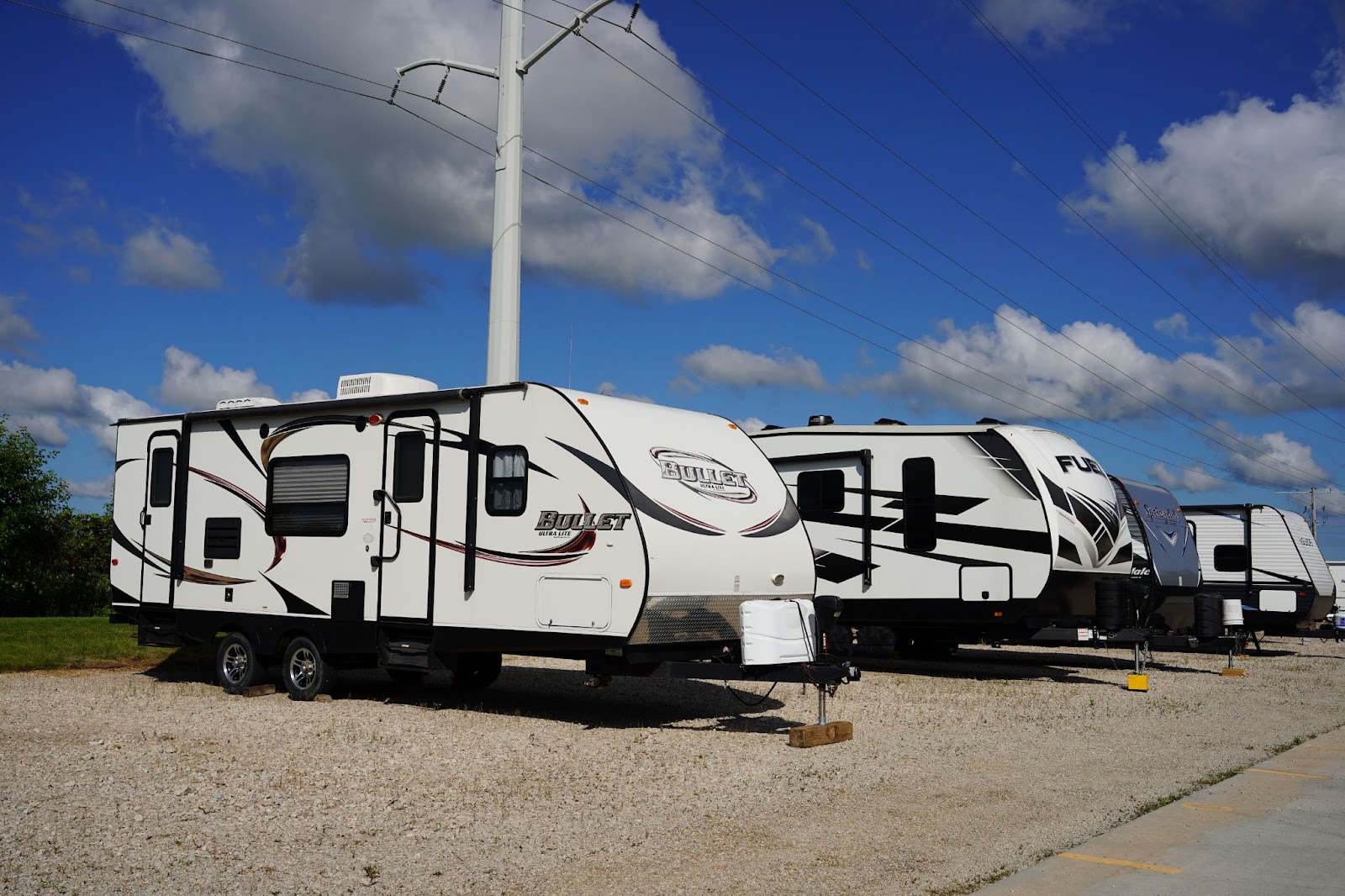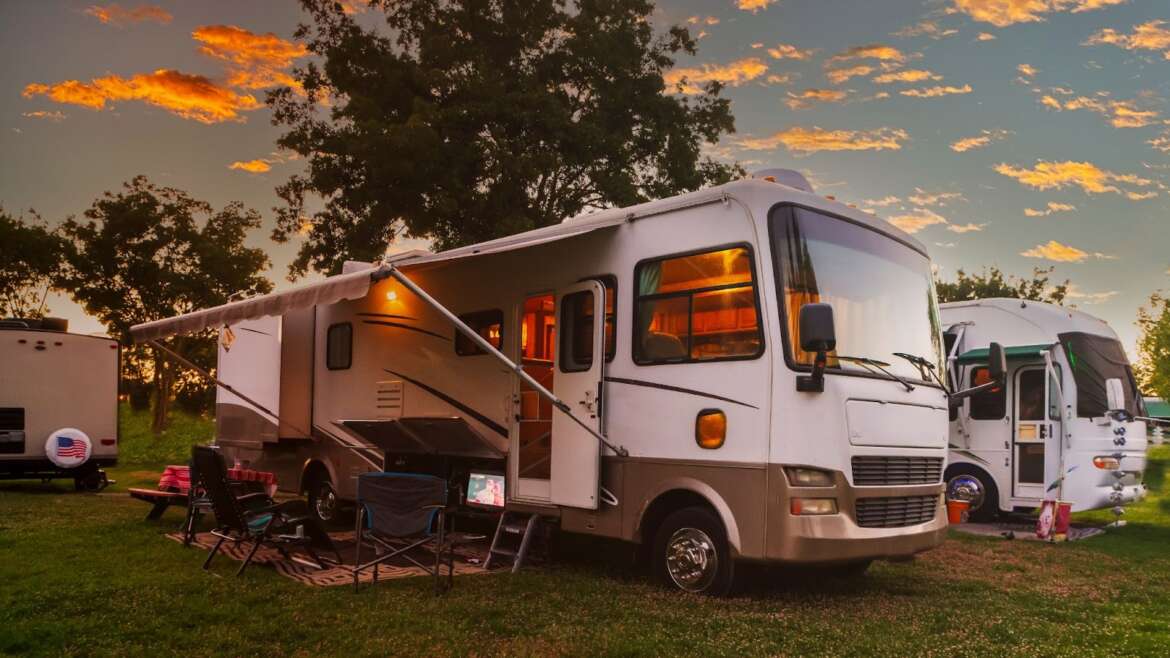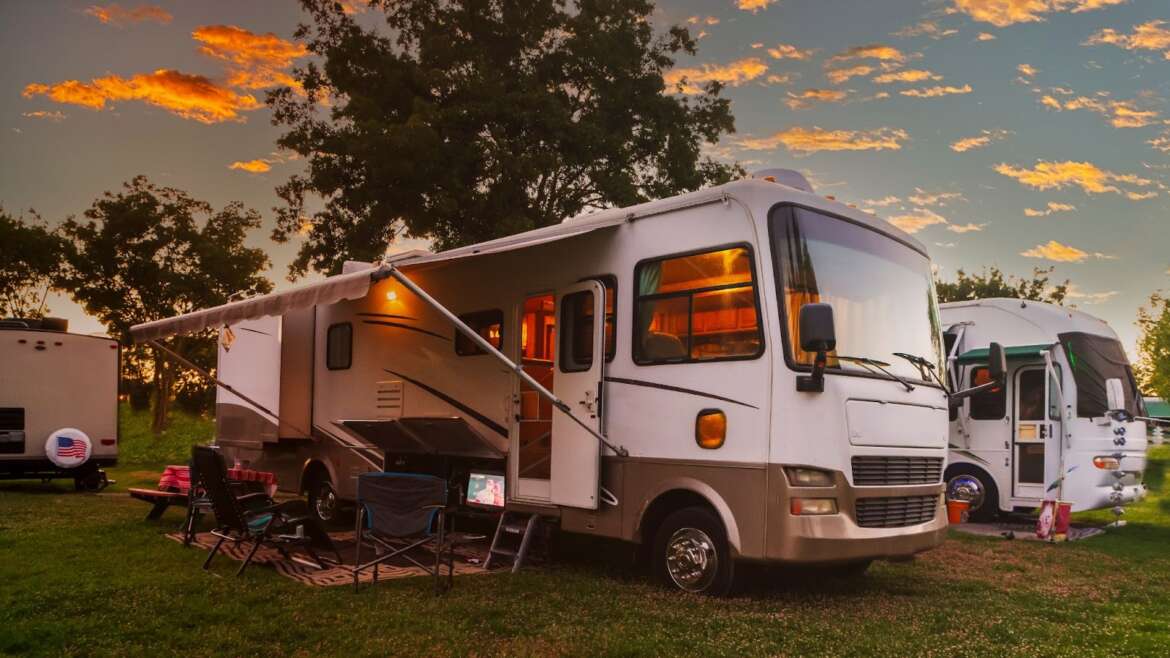Self storage RV parking is a smart solution when you’re stepping away from the road for an extended period. But before you park and lock up your rig, there’s some essential prep work to do. Proper long-term storage starts well before you roll into the lot.
Every detail matters, from draining systems and sealing openings to protecting your tires and batteries. Choosing a secure self-storage facility for long-term RV parking adds another layer of protection, keeping your vehicle safe, clean, and ready for your next adventure.
In this guide, we’ll walk you through the right steps to prep your RV for long-term storage so you can park it with confidence.
Clean your RV inside and out
Before placing your RV in long-term RV parking, it’s essential to thoroughly clean it inside and out. Proper cleaning protects your vehicle’s finish, prevents mold and odors, and helps preserve interior materials during storage.
Start with the exterior
Wash off road grime, salt, bug residue, and bird droppings, which can stain or corrode your RV’s paint and trim if left untreated. Once clean, apply a high-quality wax or sealant to create a barrier against UV rays, moisture, and dirt while it’s in storage. Don’t forget the roof, windows, and awnings — they take equal abuse from the elements.
Remove all food, trash, and perishable items inside the RV to avoid attracting pests. Clean the fridge and freezer, open the doors, and wipe down all cabinets, counters, and floors. Vacuum upholstered surfaces and check for anything that could mold or rot over time.

Drain and disconnect all water systems
One of the most important steps before placing your RV into long-term RV parking is properly draining and disconnecting all water systems. Leaving water in your tanks or lines can lead to freezing, cracking, mildew, or even costly plumbing damage — especially if you’re storing your RV during colder months.
Empty all tanks
Start by emptying all tanks: the fresh water tank, gray water tank, and black water tank. Rinse them thoroughly to prevent residue buildup and lingering odors. Use a tank cleaning wand or flush system to fully clear the black tank, then leave all tank valves open for a few minutes to ensure complete drainage.
Add anti-freeze
If you’re storing in an area where temperatures drop below freezing, add RV-safe antifreeze to the plumbing system. Run it through the faucets, shower, and toilet to protect pipes and valves from expanding and cracking.
Disconnect everything
Next, disconnect the water pump and bypass any filters you may have installed. Shut off the water heater and release any built-up pressure by carefully opening the relief valve. Lastly, cap or cover all external water ports to keep pests and debris out.
Protect the battery and electrical systems
Start by disconnecting the house and chassis batteries. If you’re storing them in cold weather, it’s often best to remove them entirely and store them in a cool, dry place where they won’t freeze. Be sure to fully charge them before storage and check the charge level monthly if possible.
If you plan to leave the batteries installed, consider using a trickle charger or solar maintenance charger to keep them topped off without overcharging. This helps prevent deep discharges that can shorten battery lifespan.
Also, switch off all interior lights, appliances, and the main breaker panel to avoid any phantom power draw while your RV is parked.
Take a few minutes to inspect all electrical connections, especially around the battery terminals. Clean off any corrosion and apply a protective sealant if needed. This will keep the terminals in good shape while your RV is in storage.

Check tires and add protection
Your RV’s tires carry a lot of weight — literally and financially. When your rig is sitting in long-term RV parking, neglecting your tires could lead to cracking, flat spots, or even full replacement down the road. A little prep goes a long way toward extending tire life and ensuring a smooth ride when you hit the road again.
Check tire pressure
Start by checking tire pressure. Inflate all tires, including the spare, to the manufacturer’s recommended PSI. Tires naturally lose air over time, and sitting flat for months could cause irreversible damage or uneven wear.
Reduce exposure to the elements
Next, reduce exposure to sunlight and heat, both of which can dry out rubber and cause cracking. Use UV-resistant tire covers to shield all exposed tires, especially if your RV is stored outdoors. If possible, park on wood blocks or RV leveling pads instead of directly on asphalt or concrete, which could accelerate dry rot and moisture buildup.
Inspect for wear
Inspect for existing wear or damage, and if you’re storing nearby, make a note to recheck tire pressure monthly. Moving the RV slightly every few months to prevent flat-spotting, especially for heavier rigs, is also a good idea.
Cover and seal the RV properly
A high-quality cover and proper sealing help prevent water intrusion, UV damage, dirt buildup, and unwanted pests from getting inside.
Start by sealing all windows, roof vents, and doors. Inspect the seals and caulking around each opening. If you notice any cracks, gaps, or signs of wear, reseal with a weatherproof RV sealant before storing. Even a small leak can lead to costly water damage over time, especially during long-term storage.
Next, choose a breathable, RV-specific cover. Unlike tarps, which might trap moisture and cause mold or paint damage, RV covers allow airflow while blocking UV rays, rain, snow, and dust. Make sure the cover fits snugly and is securely fastened to prevent flapping or shifting during windy days.
Also, consider covering the roof-mounted accessories, vents, and air conditioners with custom covers or padded materials. This adds another layer of protection for components that take a beating from the weather.
Pest-proof your RV
Mice, insects, and even birds can find their way into your RV through tiny openings — and once inside, they chew wires, nest in insulation, or leave behind damaging waste. That’s why pest-proofing is a must before your RV goes into self storage RV parking.
Seal entry points
Start by sealing all possible entry points. Check for gaps around utility hookups, slide-outs, vents, and underneath the chassis. Use expanding foam, steel wool, or rubber gaskets to close off any openings. Cover the exhaust pipe and air intake with mesh or a fitted cap to keep critters out.
Close sinks and shower drains
Inside the RV, close all sink and shower drains with stoppers and plug toilet bowls with RV-safe covers. These damp, dark spaces can attract bugs and rodents if left unsealed. Remove all food and scented products, including pet food, soap, and cleaning supplies.
Place natural pest deterrents like dryer sheets, cedar blocks, or peppermint oil in drawers, cabinets, and storage bays for added protection. If you’re storing in a more pest-prone area, consider using commercial rodent repellents or traps in non-living areas.

Take care of fuel and fluids
Before placing your RV into long term RV parking, it’s important to prep the engine and generator to prevent corrosion, gunk buildup, and moisture contamination — especially if you won’t be driving it for several months. Your fuel system and engine fluids need attention now to ensure everything runs smoothly later.
Start with the fuel tank. Top it off completely to reduce the chance of condensation forming inside the tank during storage. Then, add a fuel stabilizer to prevent the gasoline or diesel from breaking down over time. Run the engine and generator for a few minutes to circulate the treated fuel throughout the system.
Next, check all major fluids — engine oil, coolant, transmission fluid, brake fluid, and windshield washer fluid. If any are low, top them off. Consider changing the engine oil before storing, especially if it’s nearing the end of its cycle, since used oil contains contaminants that can harm the engine over time.
If your RV has a generator, run it for about 15–20 minutes under load before storage. This helps lubricate internal components and keeps seals from drying out.
Store your RV at Bear River Storage
When it’s time to park your RV, don’t leave it somewhere that only kind of meets your needs. At Bear River Storage, we specialize in self storage RV parking that’s clean, secure, and built for long-term protection. With spacious lots, gated access, 24/7 surveillance, and friendly on-site support, we make it easy to store your RV without worry.
Whether you’re stepping away for the season or storing long-term, you deserve a facility that takes your investment seriously. Our team is here to help you park, protect, and fully prep your RV so it is ready to roll when you are.
Contact Bear River Storage today to reserve your spot and see why we’re the trusted choice for secure self storage and long-term RV parking in your area.



